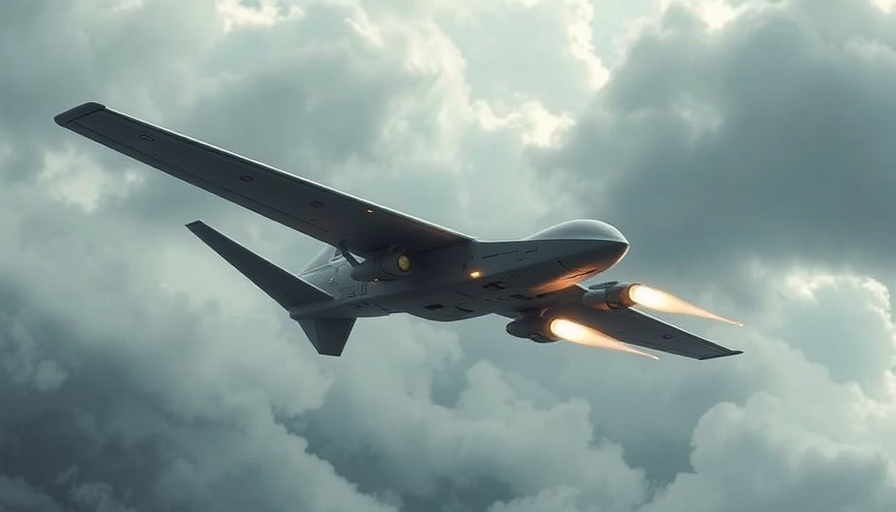
AeroVironment and the AI Revolution in Defense
AeroVironment, a key player in the unmanned aerial vehicle (UAV) market, stands at the intersection of technological advancements and geopolitical change. With breakthroughs in agentic AI, the company is not just poised for growth but a potential surge that could redefine its role in modern warfare. Agentic AI refers to autonomous systems capable of making decisions based on real-time data, profoundly impacting how UAVs and loitering munitions operate on the battlefield.
The Growing Demand for Autonomous Drones
The need for enhanced autonomous capabilities comes against a backdrop of escalating global tensions and defense spending. The U.S. and its allies, notably Taiwan, are significantly increasing their investment in advanced UAV systems, with a record backlog of orders for AeroVironment worth $2.2 billion. This backlog suggests robust future growth prospects, even as the company faces short-term revenue declines. The intersection of geopolitical instability and technological evolution creates a unique opportunity for AeroVironment to leverage its expertise in agentic AI.
Defining Agentic AI and Its Impact
Agentic AI represents a new frontier in artificial intelligence, allowing drones to operate with increasing levels of independence and decision-making capability. Recent advances have enabled these small unmanned aircraft to incorporate sophisticated AI processors, thereby enhancing their operational efficiency and responsiveness. This transformation enables drones to adapt to changing landscapes in real-time, making them invaluable tools for military operations and surveillance.
Technological Revolution: The Risks and Rewards
While the prospects of agentic AI promise significant advancements, it is crucial to consider the associated risks. Geopolitical demand fluctuates, and the procurement landscape may shift due to government funding decisions or changing priorities. Additionally, competition from lower-cost manufacturers, particularly from countries like China, poses a threat to AeroVironment's market position. Thus, while the company's innovations in agentic AI can lead to increased efficiency, they must navigate these challenges carefully to maintain their competitive edge.
A Future of Opportunities and Challenges
Looking ahead, the integration of agentic AI into AeroVironment’s product offerings cannot be understated. The potential applications extend beyond just military use—it paves the way for civilian applications in areas like infrastructure inspections, agriculture monitoring, and disaster response. As AI technology evolves, the capabilities of UAVs will broaden, positioning AeroVironment as a leader in both defense and civilian markets.
Empowering Investors: Making Informed Decisions
For investors, understanding the dynamics of AeroVironment’s position within the agentic AI landscape is vital. The company’s strong order book and the potential for enhanced UAV capabilities suggest a promising investment outlook. Moreover, monitoring geopolitical developments can provide insights into the future demand for advanced drones. Investors should assess how AeroVironment's technology evolves against the backdrop of competition and changing military needs.
In conclusion, AeroVironment stands at a pivotal moment where agentic AI could redefine its trajectory. As the company continues to integrate this transformative technology, it is crucial for enthusiasts and investors alike to stay informed about the upcoming advancements and their implications for the industry.
For those interested in the future of AI in defense and the exciting prospects of autonomy in drones, consider following AeroVironment’s progress closely. Staying engaged with technology advancements can yield profound insights into investment opportunities in this rapidly growing market.
 Add Row
Add Row  Add
Add 




 Add Row
Add Row  Add
Add 

Write A Comment